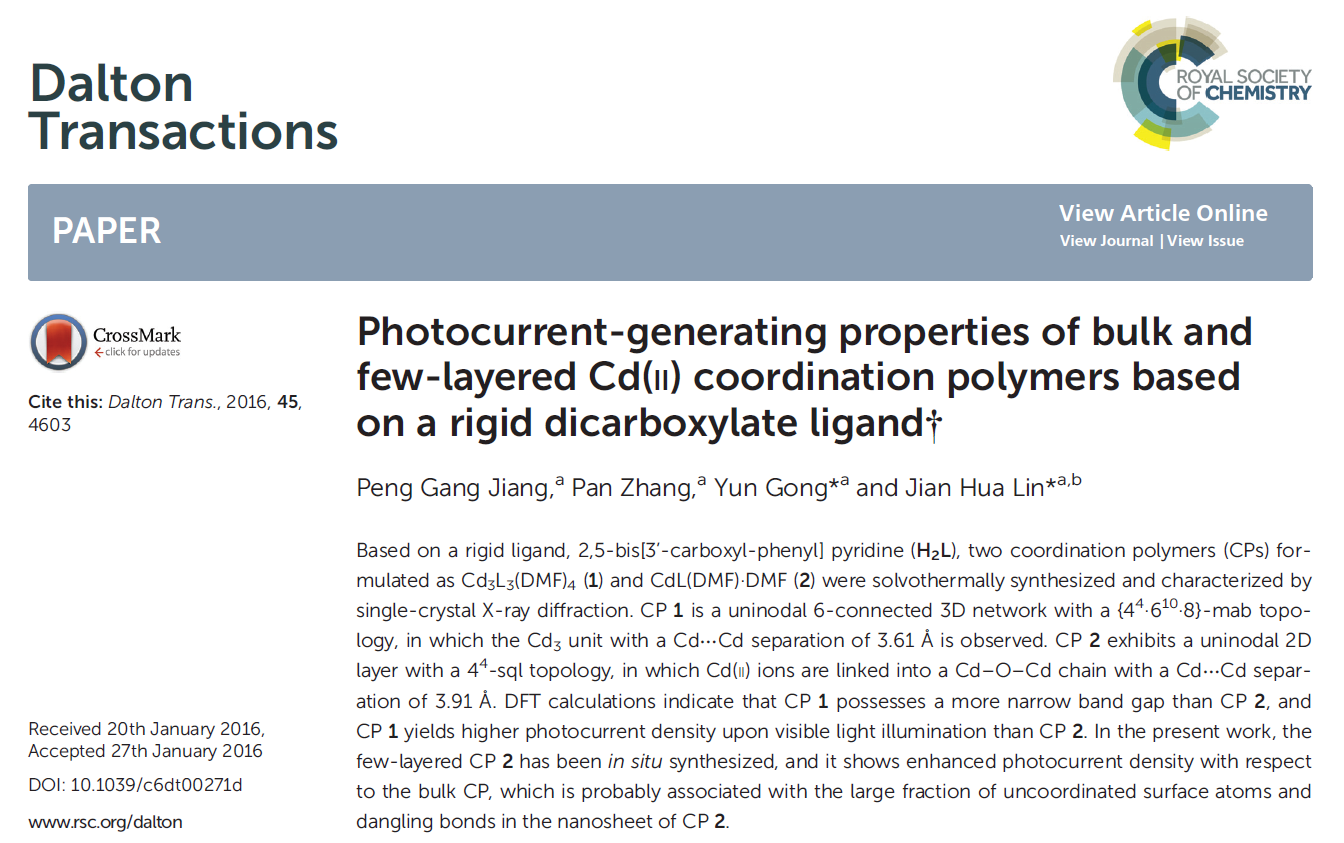Service hotline
+86 18518316054
 Current location : Home page > Resources > Papers > Photocurrent-generating properties of bulk and few-layered Cd(II) coordination polymers based on a rigid dicarboxylate ligand†
Current location : Home page > Resources > Papers > Photocurrent-generating properties of bulk and few-layered Cd(II) coordination polymers based on a rigid dicarboxylate ligand†
Abstract
Based on a rigid ligand, 2,5-bis[3′-carboxyl-phenyl] pyridine (H2L), two coordination polymers (CPs) formulated as Cd3L3(DMF)4 (1) and CdL(DMF)·DMF (2) were solvothermally synthesized and characterized by single-crystal X-ray diffraction. CP 1 is a uninodal 6-connected 3D network with a {44·610·8}-mab topology, in which the Cd3 unit with a Cd⋯Cd separation of 3.61 Å is observed. CP 2 exhibits a uninodal 2D layer with a 44-sql topology, in which Cd(II) ions are linked into a Cd–O–Cd chain with a Cd⋯Cd separation of 3.91 Å. DFT calculations indicate that CP 1 possesses a more narrow band gap than CP 2, and CP 1 yields higher photocurrent density upon visible light illumination than CP 2. In the present work, the few-layered CP 2 has been in situ synthesized, and it shows enhanced photocurrent density with respect to the bulk CP, which is probably associated with the large fraction of uncoordinated surface atoms and dangling bonds in the nanosheet of CP 2.
Experiemental
Photoelectrochemical measurements were carried out by using a conventional three-electrode setup. The counter electrode was a Pt foil, and the reference electrode was a Ag/AgCl electrode. A fluorine doped tin oxide (FTO)-coated glass plate (12-14 μS m-1, 1.2*1.2cm²) was cleaned ultrasonically in acetone and ethanol, respectively. 1 mg bulk sample(or 0.0125 mg few-layered CP2) was ultrasonicated in a mixture of ethanol(1 ml) and nafion(0.05ml) solution, then was deposited on the FTO electrode with 1.2*0.9cm² of the effective light irradiatioin area for illumination to botain the working electrodes(phoyoelectrodes) after the solvent is dried by an IR lamp. 0.05M phosphate buffer (PH 6.8,H3PO4/KOH,50ml) was used as a supporting electrolyte for all the photoelectrochemical measurements. The modified FTO electrodes were irradiated with a 300W xenon lamp(CEL-HXF300, Beijing Aulight Co., Ltd >400nm) from the front side. THe photocurrent generation from the modified FTO electrode was detected by a voltammetric analyzer.
